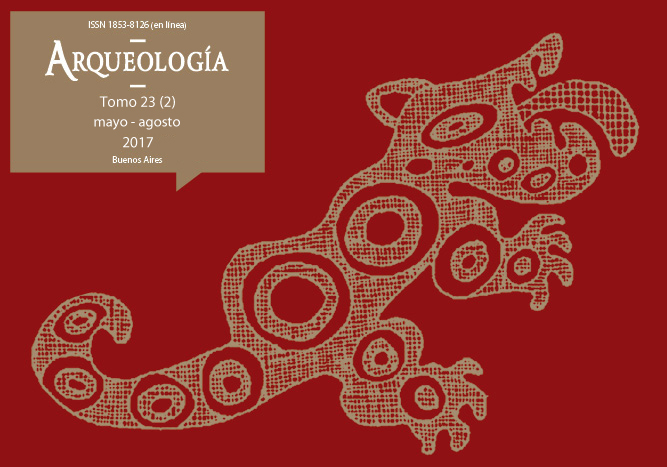First millennium AD pottery from the Quebrada de Amaicha (Tafí del Valle Department, Tucumán Province): Insights on technology and potential raw materials
Keywords:
Pottery manufacturing, Pastes preparation, Raw materials, Quebrada de Amaicha, First Millennium AD
Abstract
This paper is the first systematic approach to pottery manufacturing practices in Quebrada de Amaicha during first millennium AD. The first steps of the chaîne opératoire were analyzed. Essentially, those that relate to raw material provision, preparation, and paste elaboration. To this end, ceramic paste analysis on sherds recovered from the archaeological sites of El Remate and Bajo Los Cardones, and their potential raw materials are presented here. Paste composition and its attributes were analyzed using a binocular magnifying glass and a petrographic microscope. This revealed information about choices taken during pottery manufacture, and about the geological nature of the non-plastic elements in the ceramic paste. Alongside this study, local clay and sand deposits were analyzed, including the geological characteristics of the area. This allowed us to consider technological aspects of ceramic manufacture, especially of paste preparation. This data provided us with information on the existence of local resources suitable for pottery manufacturing; while suggesting that these raw materials were used effectively by local inhabitants during first millennium AD.Downloads
Download data is not yet available.
How to Cite
Giusta, M. N. (1). First millennium AD pottery from the Quebrada de Amaicha (Tafí del Valle Department, Tucumán Province): Insights on technology and potential raw materials. Arqueología, 23(2), 35-61. https://doi.org/10.34096/arqueologia.t23.n2.3777
Section
Articles
Authors who publish in this journal agree to the following conditions:
- Authors retain copyright and yield to the journal right of first publication with the work registered with attribution license Creative Commons, which allows third parties to use the published always mentioning the authorship of the work and first publication in this magazine.
- Authors can make other independent and additional contractual arrangements for the non-exclusive distribution of the version of the article published in this issue (p. Eg., Inclusion in an institutional repository or publish it in a book), provided that clearly indicate that the work was published for the first time in this magazine.
- It allows and encourages the author / s to publish their work online (eg institutional or personal pages) before and during the process of revision and publication, as it can lead to productive exchanges and greater and more rapid dissemination of work published (See The Effect of Open Access).





(1)13.png)






1.jpg)
1.jpg)


13.png)
1.png)


(1)1.png)









